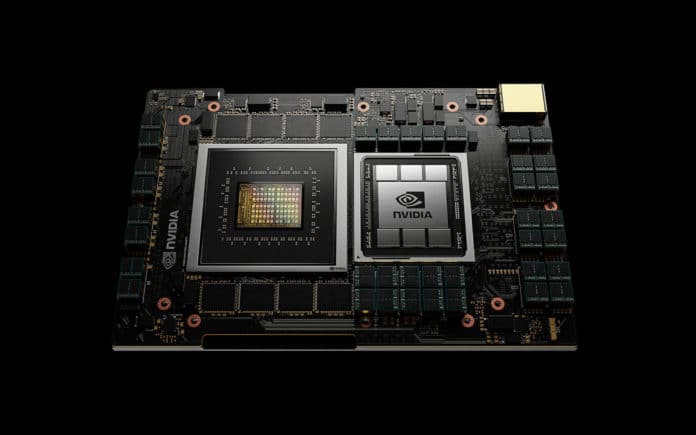NVIDIA has announced its first data center CPU. This Arm-based processor will deliver 10x the performance of today’s fastest servers on the most complex AI and high-performance computing workloads.
NVIDIA’s new Grace CPU is named after Grace Hopper, the U.S. computer programming pioneer. It is designed to address the computing requirements for the world’s most advanced applications, including NLP (Natural Language Processing), recommender systems, and AI supercomputing that analyze enormous datasets requiring both ultra-fast compute performance and massive memory. It combines energy-efficient Arm CPU cores with an innovative low-power memory subsystem to deliver high performance with great efficiency.
“Leading-edge AI and data science are pushing today’s computer architecture beyond its limits – processing unthinkable amounts of data,” said Jensen Huang, founder, and CEO of NVIDIA. “Using licensed Arm IP, NVIDIA has designed Grace as a CPU specifically for giant-scale AI and HPC. Coupled with the GPU and DPU, Grace gives us the third foundational technology for computing and the ability to re-architect the data center to advance AI. NVIDIA is now a three-chip company.“
Grace is a highly specialized processor designed for workloads such as training next-generation NLP models with over 1 trillion parameters. Working closely with NVIDIA GPUs, the Grace-based system delivers up to 10x the performance of today’s NVIDIA DGX-based x86-based systems.
Grace as the CPU uses an LPDDR5X memory subsystem that will deliver twice the bandwidth and 10x better energy efficiency compared with DDR4 memory. The high performance of the chip is based on the fourth-generation NVIDIA NVLink interconnect technology, which provides connection speed between Grace and NVIDIA GPUs at the level of 900 GB/s. This will achieve 30x higher aggregate bandwidth compared to today’s leading servers.
“NVIDIA’s novel Grace CPU allows us to converge AI technologies and classic supercomputing for solving some of the hardest problems in computational science,” said CSCS Director Prof. Thomas Schulthess. “We are excited to make the new NVIDIA CPU available for our users in Switzerland and globally for processing and analyzing massive and complex scientific datasets.”
The Grace processor will serve a niche segment of computing. The Swiss National Supercomputing Center (CSCS) and the U.S. Department of Energy’s Los Alamos National Laboratory were the first to announce plans to build supercomputers based on Grace chips to support national scientific research. Server systems for them will be manufactured by Hewlett Packard Enterprise, and deliveries of such devices to customers are planned for 2023.
Grace will be supported by the NVIDIA HPC software development kit and the full suite of CUDA and CUDA-X libraries, which accelerate more than 2,000 GPU applications, speeding discoveries for scientists and researchers working on the world’s most important challenges.
